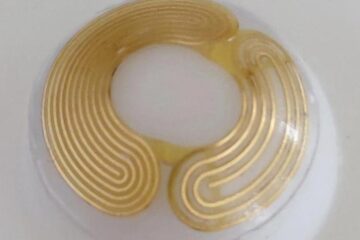New Guideline Evaluates Treatments for Postherpetic Neuralgia

A new guideline from the American Academy of Neurology evaluates treatments for postherpetic neuralgia. The guideline is published in the September 28 issue of Neurology, the scientific journal of the American Academy of Neurology. The guideline recommends tricyclic antidepressants, gabapentin, lidocaine patch, and opioids for treating the pain of postherpetic neuralgia.
Postherpetic neuralgia is characterized as pain that persists more than three months after an individual has experienced shingles, a viral infection also known as herpes zoster. The condition affects the nerves and skin, and the pain can burn, ache, or resemble an electric-shock feeling. Not everyone who gets shingles will develop postherpetic neuralgia. However, the risk increases with age. While there is no cure, the condition improves over time for most people. More than half stop experiencing pain within one year.
“This guideline will help direct patients and their physicians to the treatments that will bring the most effective relief to postherpetic neuralgia,” said guideline co-author Richard M. Dubinsky, MD, MPH, of University of Kansas Medical Center, Kansas City.
To develop the evidence-based guideline, the authors reviewed all scientific studies on postherpetic neuralgia. Tricyclic antidepressants, the antiepileptic drug gabapentin, the lidocaine skin patch, and opioids were found to be effective in reducing pain. Yet there is not enough data at this time to make any recommendations on the long-term effects of these treatments. Aspirin cream and capsaicin were found to be below the level of benefit that is considered clinically important in treatment of chronic pain.
The guideline also determined that acupuncture, morphine, laser treatments, vitamin E, benzydamine cream, dextromethorphan, indomethacin, epidural methylprednisolone, iontophoresis of vincristine, lorazepam, and zimelidine aren’t beneficial in treating postherpetic neuralgia. “Future research should be conducted to determine what combination of treatments will provide relief from postherpetic neuralgia pain and improve the quality of life for patients,” Dubinsky said.
Media Contact
More Information:
http://www.aan.comAll latest news from the category: Health and Medicine
This subject area encompasses research and studies in the field of human medicine.
Among the wide-ranging list of topics covered here are anesthesiology, anatomy, surgery, human genetics, hygiene and environmental medicine, internal medicine, neurology, pharmacology, physiology, urology and dental medicine.
Newest articles

‘Smart’ contact lenses could someday enable wireless glaucoma detection
Most people with early-stage glaucoma don’t know they have it, even though early treatment is key to reducing vision loss. While detecting a subtle increase in eye pressure helps doctors…

New tech may lead to smaller, more powerful wireless devices
Good vibrations… What if your earbuds could do everything your smartphone can do already, except better? What sounds a bit like science fiction may actually not be so far off….

Caution, hot surface!
An international research team from the University of Jena and the Helmholtz Institute Jena are demystifying the mechanisms by which high-intensity laser pulses produce plasma on the surface of solids….





















